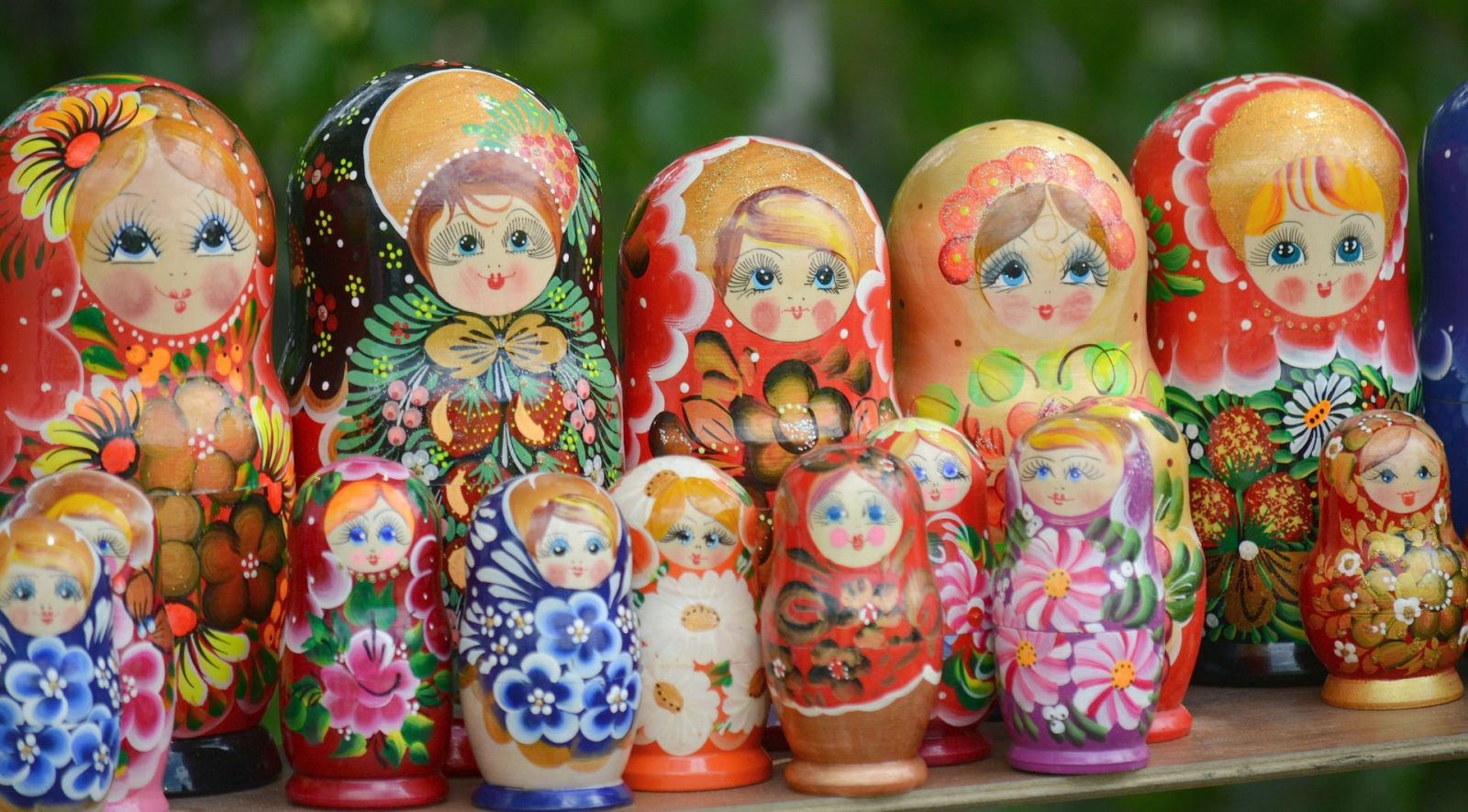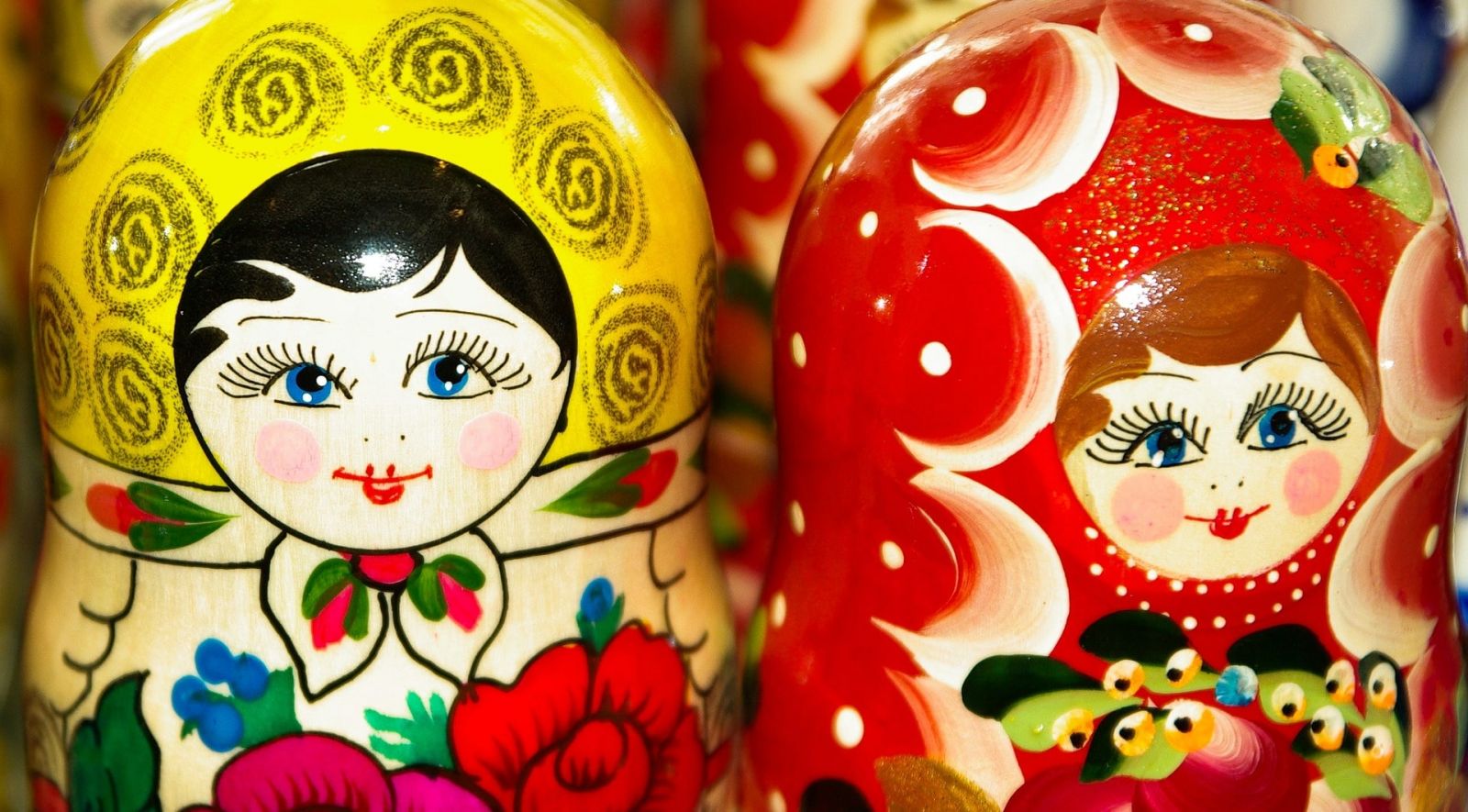What is the best souvenir to bring from your tour to Russia? Undoubtedly, a Matryoshka - a Russian wooden doll with smaller dolls stacked within the bigger ones, considered to be a symbol of Russian folk art and culture.
The word "Matryoshka" is among the top 5 words strongly associated with Russia. Only a few Russian words were borrowed by the languages of the world unchanged; Matryoshka is one of them. Despite the fact that the word is hard to pronounce, different spellings can be met in English texts: "Matrioshka", "Matreshka", "Matreoschka" or even "Matrushka". At the same time, there are other references to Matryoshkas: babushka dolls or nesting dolls. But how are nesting dolls made and what do Matryoshka dolls represent?
Japanese Ancestor of the Beauty
Matryoshka goes further than 125 years back. The first Matryoshka appeared in the late 19th century near Moscow. The doll's ancestor is a figure of the Japanese sage Fukurama which depicted a good-natured old man with an outstretched head. The figure could be split and had a smaller-sized figure of the same sage hidden inside, which in its turn also contained a smaller sage, and so on until the fifth one.
The Fukurama figurine was brought to Russia by Elizaveta Mamontova, wife of a major industrialist, entrepreneur and patron Savva Mamontov, from her travel to the island of Honshu. At the end of that century, the turner Vasily Zvezdochkin machined and artist Sergei Malyutin painted a wooden image of a beautiful woman on the first Russian doll holding the name “Matryoshka”.

Fun Fact
The Matryoshka's design was inspired by a figure of the Japanese sage Fukurama which illustrated a good-natured old man with an outstretched head.
Mother of a Huge Family
The new doll was given the name Matrona, which was one of the most popular female names in Russia of those years. This name derived from the Latin word "mater" (mother) and was considered appropriate for a mother of a large family.
The first Matryoshka doll, which has since then become a symbol of motherhood, was painted under the image of a simple peasant girl in a sundress with an apron and a kerchief on her head. Till now Matryoshka symbolizes the continuation of life.
The industrial production of Matryoshka soon began at the Moscow toy factory. First Matryoshkas consisted of 8 figures, embedded into each other, alternating girls and boys. Each figure was different from another, and the last one was a tiny figure of a swaddled baby, thus representing the entire family with kids of different age.

Peak of Popularity
The export of Matryoshka began at the beginning of the 20th century. This was highly promoted by the Leipzig Trade Fair; and since 1909 Matryoshka became a permanent exhibit of all exhibitions in Berlin and was shown at the annual bazaar of handicrafts in London. The lovely character of a Russian woman gained popularity first among visitors of various exhibitions and then quickly caught on in entire Europe.
Matryoshka's popularity peaked in the summer of 1957 when the World Festival of Youth and Students was held. 35 thousand participants from 131 countries came to Moscow; most of them bought Russian Matryoshka and carried them all over the world.

The main purpose of the doll is to surprise. Matryoshka can be not only a female; some portray young cowherds, others a bride and a groom, famous artists and politicians.
Craftsmen who paint Matryoshka are in no way limited to their imagination: the richness of colors, various styles of clothing. Sets of Matryoshka dolls can be dedicated to the historical events, illustrate characters of fairy tales, fables and other literary works.
So, where and how are Matryoshka dolls made and is it possible to determine their origin? Matryoshka dolls are made of linden and often it's very easy to determine in which region of Russia the Matryoshka has been made.
Fun Fact
Matryoshka can be not only a female; some portray young cowherds, others a bride and a groom, famous artists and politicians.
The Main Types of Matryoshka
The Sergievo-Posadskaya or Zagorskaya Matryoshka is very contrasting and with simple gouache painting techniques. The doll's kerchief is tied in a knot with only two strands of hair visible. The blouse is patterned, the sundress has circles, and the apron usually has a floret.
The Semionovskaya Matryoshka originates in the Nizhny Novgorod region. Such dolls are distinguished by the informal manner of painting, the bright primary red and yellow colors, and the lack of strict criteria of the image. Semionovskaya Matryoshka always has a floral design with images of flowers such as roses.
The Maidanskaya Matryoshka also has Nizhny Novgorod region roots, but is habitually made in a small Russian village called Maidan. These dolls can be easily recognized by the small scarf or shawl with, a large flower on the head, as well as the smooth contour and elongated proportions.
The Vyatskaya Matryoshka is from the Vyatka region. Due to special manufacturing skills, this kind of Matryoshka is considered to be the most difficult to create as in addition to painting each doll is decorated with rye straw.
The Tverskaya Matryoshka from Tver region is often made in the form of a historical or fairy-tale character such as The Snow Maiden or Vasilisa the Beautiful. This kind of doll is among the favorite Matryoshka of Russian children.
There are also Matryoshka dolls of private authors made in different parts of Russia including Moscow, Kirov, Sergiyev Posad, St. Petersburg, or Tver. The design of these dolls depends entirely on their creator's imagination. The author, relying on the traditions, puts a new meaning into his or her creature resulting in creative dolls such as Matryoshkas-politicians.
Popular Types of Matryoshka:
- Sergievo-Posadskaya Matryoshka
- Semionovskaya Matryoshka
- Maidanskaya Matryoshka
- Vyatskaya Matryoshka
- Tverskaya Matryoshka
But the best thing about these wonderful dolls is that everyone could find their own unique Russian Matryoshka to bring home from a Russian trip as a reminder the country or as a gift to the nearest and dearest.



